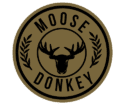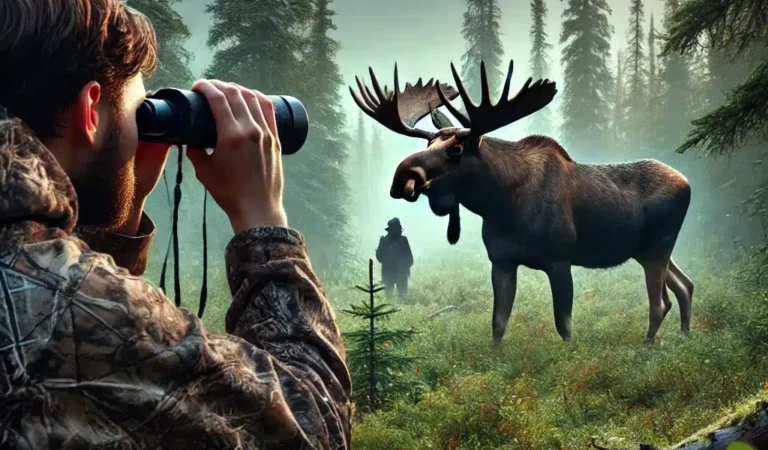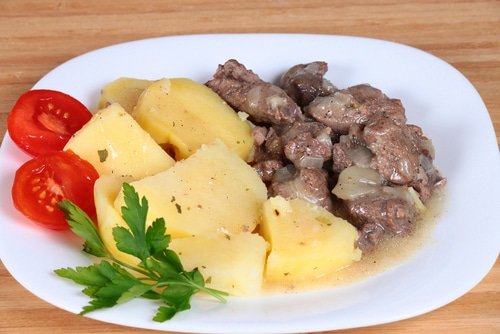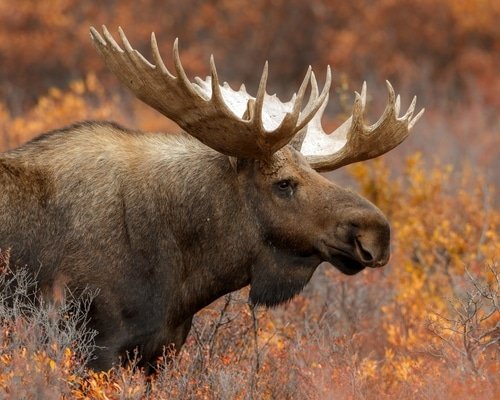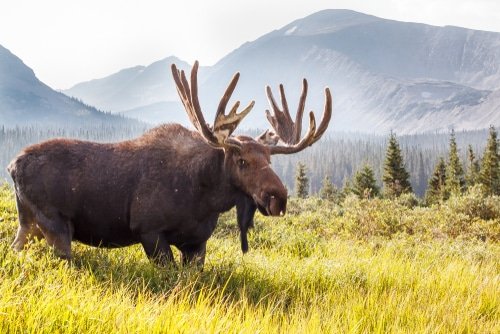Are you an adventurous soul seeking the thrill of the great outdoors? Look no further than our moose hunting guide, a captivating text that has gained immense popularity among nature enthusiasts and avid hunters. Steeped in tradition and excitement, moose hunting offers an exhilarating experience.
Picture yourself deep in the wilderness, surrounded by breathtaking landscapes, as you journey to conquer these majestic creatures.
Moose Hunting as a Popular Outdoor Activity
Moose hunting has become increasingly popular, attracting individuals who thirst for adventure and love nature. This thrilling pursuit allows hunters to challenge their skills while immersing themselves in some of Earth’s most remote and stunning regions. From the vast forests of North America to the pristine wilderness of Scandinavia, moose hunting offers an opportunity to explore untouched lands and witness incredible wildlife up close.
Having a Reliable Moose Hunting Guide
Embarking on a comprehensive moose-hunting expedition requires more than just enthusiasm; it demands knowledge, expertise, and guidance from seasoned professionals. A reliable moose-hunting guide can be your key to success in this thrilling endeavor.
These experts possess invaluable insights into local terrain and understand the behavior patterns of these magnificent creatures like no one else.
With their assistance, you can confidently navigate dense forests and significantly increase your chances of making that perfect shot. An experienced guide will lead you to prime hunting locations and provide expert tips on tracking techniques, calling strategies, and dressing and processing methods.
They ensure your safety throughout the hunt while sharing their wisdom and passion for this ancient sport. By choosing a trusted guide who knows every nook and cranny of moose territory, you are setting yourself up for an unforgettable adventure that will leave you with memories to cherish forever.
Choosing the Right Moose Hunting Guide
Researching reputable hunting outfitters and guides
When embarking on amoose-hunting adventure, it is crucial to start by researching reputable hunting outfitters and guides in the area you wish to explore. A quick internet search will present you with an array of options, but don’t rush into making a decision.
Review reviews, check out their websites or social media pages, and contact previous clients if possible. Look for outfitters with a solid reputation for providing excellent experiences and catering to their clients’ needs.
Consider the experience, expertise, and success rates of guides
Once you have identified potential moose hunting outfitters or guides, the next step is to delve deeper into their experience, expertise, and success rates. An experienced guide distinguishes between an average hunt and an extraordinary one. Look for guides who have spent years honing their skills in tracking moose and navigating the local terrain.
Expertise comes from knowledge gained over time, so seek out those who deeply understand moose behavior and habits. Additionally, inquire about their success rates in previous hunts; you want someone with a proven record of helping hunters bag that majestic bull.
Local terrain and moose behavior
When choosing a moose hunting guide, one essential aspect is evaluating their knowledge of the local terrain and moose behavior. The more familiar they are with the specific area you plan to hunt, the better they can navigate it effectively, leading you to prime moose territory. An expert guide should understand where these magnificent creatures roam during different seasons or times of day.
Their ability to read signs left by animals,als such as tracks or dropping ngs, can greatly increase your chances of a successful hunt. Additionally, a guide’s knowledge of moose behavior can aid in predicting their movements and adapting hunting strategies accordingly.
By researching reputable outfitters, considering experience and success rates, and evaluating a guide’s knowledge of the local terrain and moose behavior, you are on the right path to finding an exceptional moose-hunting guide to enhance your overall experience. Remember, finding the perfect fit will undoubtedly pay off with expert hunting tips and a comprehensive hunting adventure that you will cherish for some.
Moose Species and Their Characteristics
The moose is a majestic creature found in the northern parts of North America, Europe, and Asia. It is the largest member of the deer family and possesses several distinct characteristics.
Adult males, also known as bulls, can weigh up to 1,500 pounds and stand over six feet tall at the shoulder. One of their most recognizable features is their massive antlers that can span up to six feet across.
Females, called cows, are slightly smaller than bulls but still impressively large. Moose have long legs built for traversing through marshy areas and snow-covered landscapes.
The Preferred Habitats and Feeding Patterns of Moose
Understanding moose-preferred habitats and feeding patterns is essential to increasing your chances of a successful moose hunt. Since moose are avid swimmers, they tend to thrive in areas with ample access to water sources like lakes, rivers, or wetlands.
They are primarily herbivores who rely on a diet consisting mainly of shrubs, aquatic plants such as water lilies or pondweed, and various tree barks during months when other food sources become scarce. Dense forests with abundant vegetation provide cover for moose during daylight hours when they rest.
Seasonal Changes in Moose Behavior and How It Affects Hunting Strategies
Due to shifting seasons, moose behavior changes dramatically throughout the year. Understanding these changes is crucial for devising effective hunting strategies. During mating or rutting season in late September through early October (varies by region), bulls become more aggressive as they compete for mates.
This presents an opportunity for hunters as bull moose become more vocal while searching for receptive cows. On the other hand, during the calving season in late spring or early summer, cows become more protective and sensitive to disturbances near their calves.
It’s important to be cautious during this time to avoid disrupting these maternal bonds. By understanding moose behavior and habitat preferences comprehensively, hunters can improve their chances of a successful hunt.
Armed with expert hunting tips and knowledge of moose’s unique characteristics and feeding patterns, you can create targeted strategies for tracking them down in their preferred habitat.
Recognizing the signs of a bull in a rut or respecting the protective nature of mother moose during calving season, being well-informed about seasonal changes will greatly enhance your experience as a moose hunter.

Essential Gear for Moose Hunting
Firearms and Ammunition: Choosing the Right Tools for the Job
When hunting a majestic creature like a moose, you must arm yourself with a firearm that effectively takes down such a large game. Rifles are the go-to choice for most hunters due to their accuracy and power. Popular calibers like .30-06 Springfield, .300 Winchester Magnum, or .338 Winchester Magnum are highly recommended for their ability to deliver lethal shots on moose.
Shotguns and muzzleloaders can also be used within specific regulations but may require more precision and skill. Whichever option you choose, ensure your ammunition is well-suited for moose hunting – heavy bullets designed for penetration are ideal.
Clothing and Accessories: Prioritizing Comfort and Safety
While equipping yourself with the right firearms is important, don’t underestimate the significance of appropriate clothing and accessories in ensuring a comfortable and safe moose hunting experience. Layering techniques are essential, as they allow you to adapt effortlessly to changing weather conditions.
Start with a moisture-wicking base layer followed by insulating mid-layers such as fleece or wool shirts/jackets, topped off with windproof outer layers like waterproof jackets or pants. Remember, comfort leads to improved concentration and focus, enhancing your chances of success.
Moreover, investing in high-quality boots with good ankle support and insulation is crucial for traversing rough terrains while protecting your feet from cold and wet conditions. Don’t forget to have reliable gloves and a hat to warm your extremities.
Specialized gear like scent blockers or camouflage clothing can help you blend into the surroundings, reducing the likelihood of being detected by wary moose. With these comprehensive moose hunting gear tips, you’ll be well-prepared to embark on a successful hunting expedition while prioritizing safety and maximizing your chances of an unforgettable adventure outdoors.
Tracking Techniques for Moose Hunting
Understanding tracks, signs, and droppings left by moose
Understanding their tracks, signs, and droppings is crucial when tracking moose. Moose tracks are quite distinctive, with large hoof prints measuring 5-6 inches long.
Look for deep imprints in muddy or soft terrain indicating the animal’s weight—additionally, watch out for broken branches or trampled vegetation along trails or near feeding areas.
Fresh droppings, typically dark brown and cylindrical, indicate recent moose activity. By studying these telltale signs left by moose, hunters can gain valuable insights into their movements and determine potential hunting spots.
Utilizing calls or lures to attract or locate moose
Calling is a widely used technique to attract or locate moose during hunts. There are different types of calls available, such as cow calls (imitating female moose sounds), bull grunts (mimicking male mating calls), and antler rattling (replicating the sound of two bull’s antlers clashing).
Expert hunting tips suggest using cow calls during early seasons to lure bulls searching for potential mates. Bull grunts work well during the rut when dominant males are more responsive to challenges. Lures such as scents mimicking estrous cows can also effectively attract bull moose.
Learning about spotting scopes or binoculars for long-range observation
Spotting scopes and binoculars play a crucial role in comprehensimoose-huntinging expeditions. These optical tools allow hunters to observe long-range moose movements without alerting them to their presence. Spotting scopes offer higher magnification capabilities and superior image clarity to binoculars but tend to be bulkier.
Binoculars, on the other hand, offer greater portability and ease of use. Look for models with good light-gathering properties, a wide field of view, and appropriate magnification for hunting in open landscapes.
Consider using binoculars with adjustable eyepieces or built-in image stabilization features to improve focus and reduce eye fatigue. These tools will greatly enhance your ability to spot moose from a distance, increasing your chances of a successful hunt.
Field Dressing & Processing Moose
Field dressing a harvested moose is crucial in ensuring the meat remains fresh and of high quality. Here, I will provide step-by-step instructions to guide you through this process.
Step-by-step instructions on field dressing a harvested moose
- Ensure the moose is completely down and motionless, and approach it cautiously.
- Start by cutting along the belly from the anus to the chest using a sharp knife.
- Carefully remove all internal organs, being cautious not to puncture any unwanted parts. The heart, liver, and lungs are edible and should be preserved.
- Skinning the animal is another important step. Begin an incision around each leg above the knee joint and peel the skin back carefully using your hands or a skinning knife.
- If you intend to keep the antlers as trophies, carefully detach them from the skull without damaging them during this process.
Proper handling
After field dressing, it’s important to handle the moose carcass with care to preserve its quality until it can be properly processed for consumption or storage:
- Avoid dragging or rolling the carcass on rough terrains, as this can damage the meat.
- Hang or suspend the carcass in a cool place to protect it from scavengers until further processing.
- If possible, consider quartering or deboning large meat sections for easier transportation if long distances need to be covered before reaching suitable facilities for processing.
Conclusion
Mastering field dressing techniques and appropriately handling harvested moose is essential for a successful hunt. By following the step-by-step instructions and carefully handling the meat, you can ensure that it remains of the highest quality and is ready for processing.
Remember, comprehensive moose hunting involves skills and understanding of handling the animal responsibly after a successful hunt. So, armed with these expert hunting tips on field dressing and handling, venture into the wilderness confidently and enjoy the rewards of your successful moose hunt.
